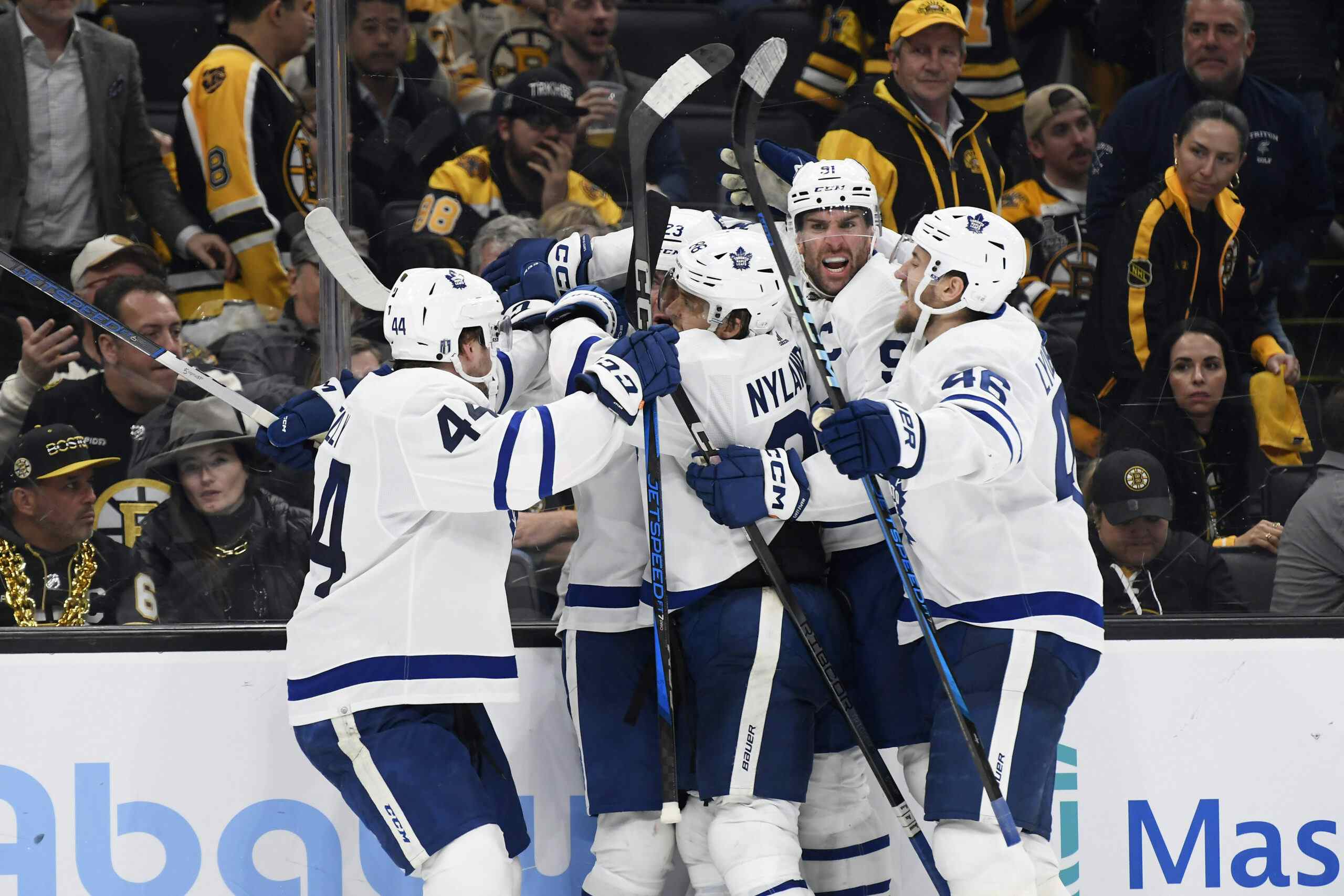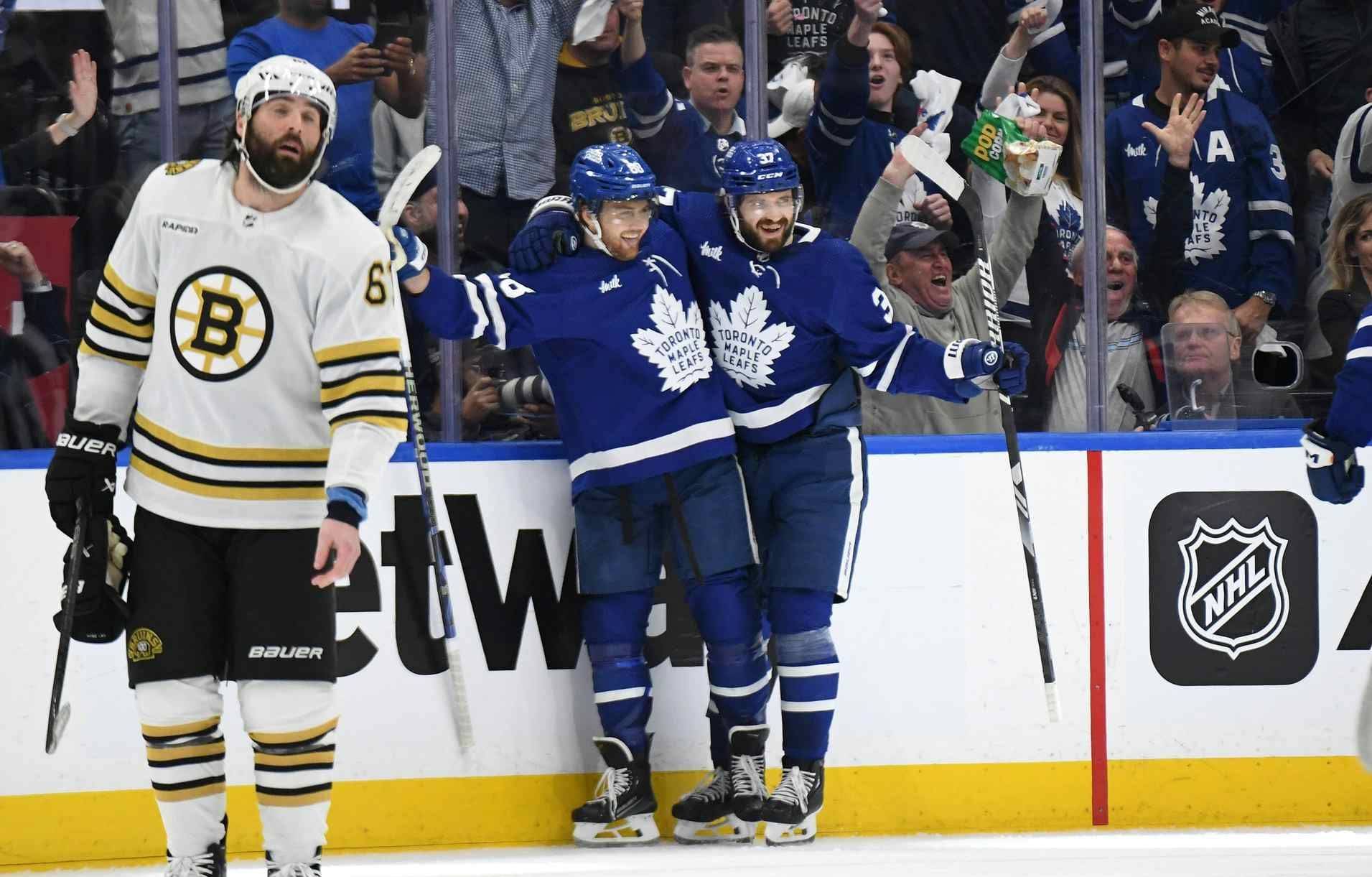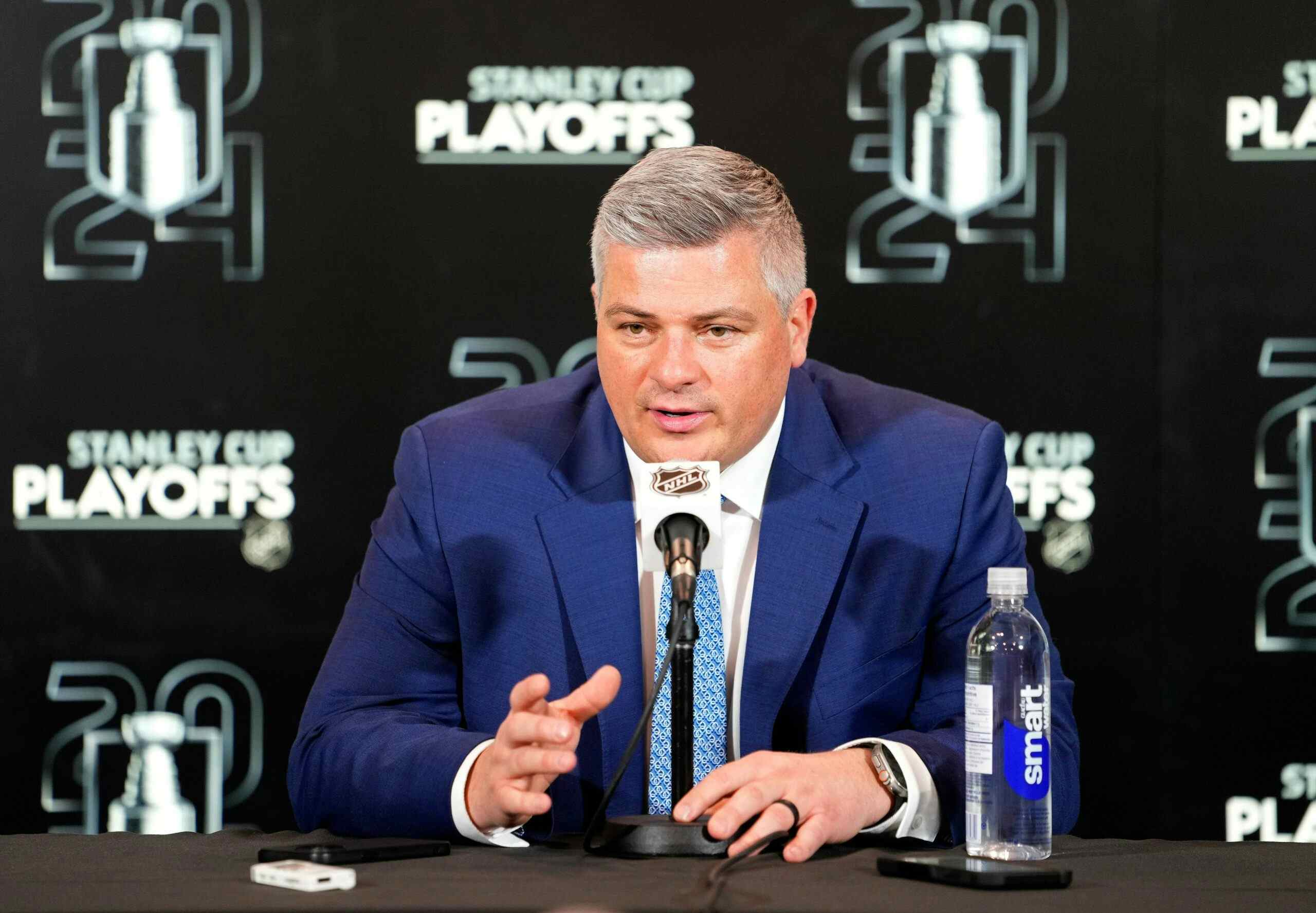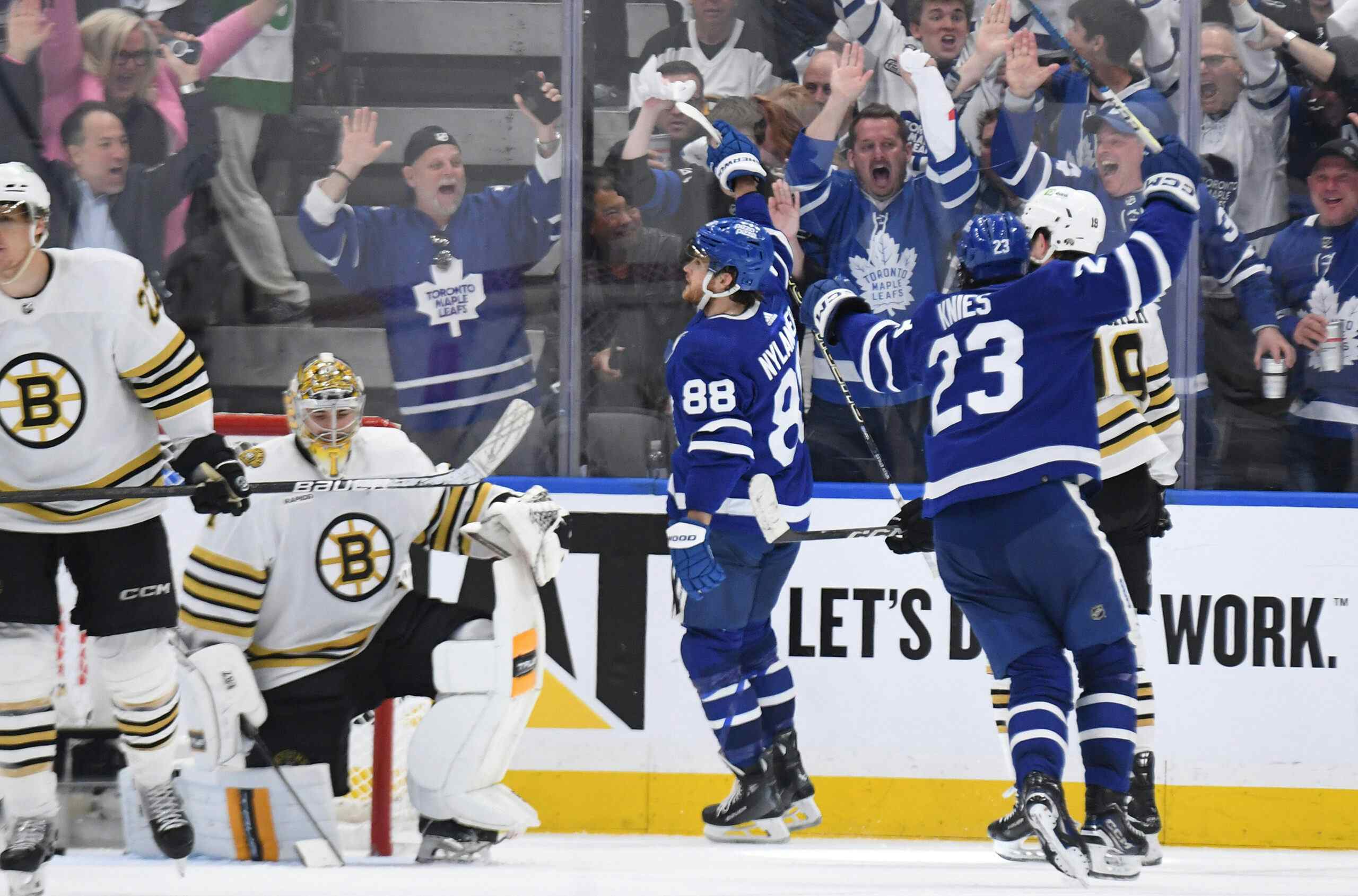This is absolutely not how the Leafs will look next year
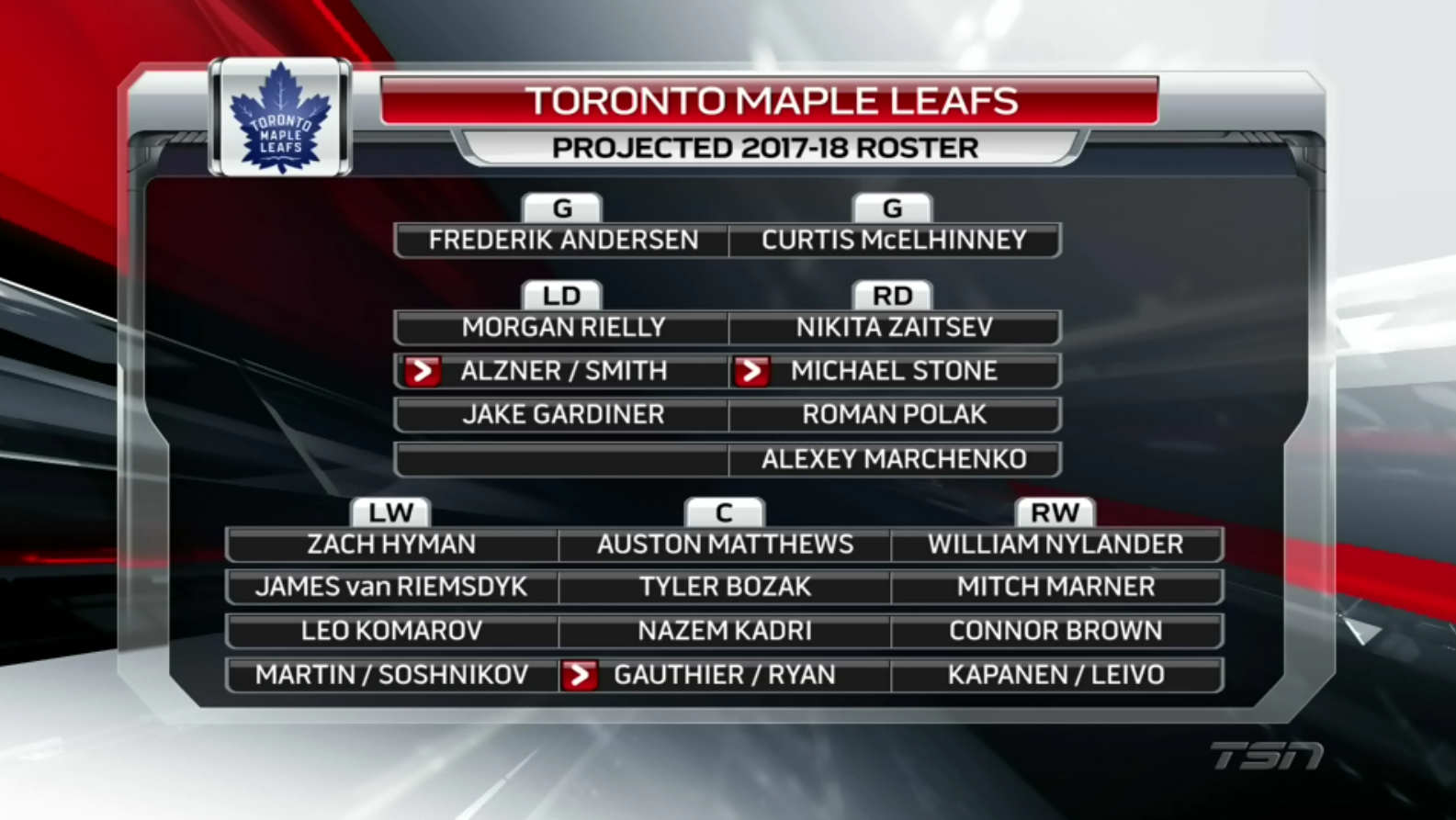
I promise you that The Leafs Nation isn’t about to become “Jeff corrects things said on TSN”, despite recent trends. However, let’s spin back to a segment involving Craig Button and James Duthie last night. This is not to rip on Craig (who, while he disagreed with our response post to his Kasperi Kapanen opinions, was very polite in his discourse with our readers), but to stress that, well, this plan for next year makes little to no sense.
Preface
TSN draws up projected rosters for the teams that they cover every year, so this is far from a new thing. As Button and James Duthie both point out, these mockups do not include trades, which, in Duthie’s words, is why James van Riemsdyk and Tyler Bozak are still on the roster. Duthie outlines the system as “identifying holes in the lineup, identifying potential free agents, and then Craig some options or advice for Leafs management. This is what they start off with, also known as the present depth chart:

It’s pretty much on point, minus the fact that it gives the illusion that Matt Hunwick, Roman Polak, or Matt Martin would ever come out of the lineup by choice. Anyway, let’s dive into the suggestions.
Losing Connor Carrick
Craig’s Argument: “The Toronto Maple Leafs are going to have to lose a player in expansion. George McPhee, the Vegas Golden Knights’ GM, drafted Connor Carrick when he was with Washington. So, projecting him to move out, and then we work with the other free agents moving out and who can be replaced.”
The Counter: Unless the Leafs are acquiring a defenceman between now and June 18th, Connor Carrick is a lock to be protected by the team. Of the eight defencemen that the Leafs currently have on their roster, just five need any sort of protection; Carrick, Morgan Rielly, Jake Gardiner, Martin Marincin, and Alexey Marchenko. Matt Hunwick and Roman Polak are unrestricted free agents in July, and Nikita Zaitsev is exempt as a first year pro under the NHL’s rules. Looking down to the Marlies, their three best defensive prospects (Travis Dermott, Andrew Nielsen, and Rinat Valiev) are all exempt.
This comes down to whether you consider Carrick, Marincin, or Marchenko to be the third defenceman protected in a 7/3/1 arrangement. The answer here is pretty obvious; the Leafs barely like the latter two enough to dress them, and one of them was picked up off waivers in the middle of the pack just a few months ago and has barely played since. Carrick’s asset value is league’s ahead of the other two; Marincin and/or Marchenko (they could trade one and still be fine) will be their exposed defencemen, with Marincin the most likely claim (barring a forward being taken)
Keeping Roman Polak
Craig’s Argument: “Polak seems to be a player that they really like, he’s one of those unrestricted free agents that you bring back.”
The Counter: I fully understand why the Leafs brought back Polak in the summer. They wanted a veteran or two around during the youth injection that was familiar with working his way up the latter and through the league, and for whatever reason, Mike Babcock feels that he helps on the penalty kill, even if he creates more penalties to kill than any other Leafs defenceman. Polak has played pretty decent in the past few months, to the point where I don’t think it’s a travesty to have him in the lineup, but I have my doubts that the Leafs will be the right fit. Given the hype that traditional hockey minds have given him this year, I wouldn’t be shocked if he was able to get a multi-year deal on the free market, and that’s not something I could see even the Leafs giving him in July. Even if they could, you have to imagine with the age trajectories as they are, that Alexey Marchenko would make more sense for a full season. While I wouldn’t rule this out, I’d assume they’d look elsewhere for an upgrade before spinning back to Polak and internal competition if that fails would make the decision tough.
Adding Karl Alzner
Craig’s Argument: “28-year-old defenceman, he plays 20 minutes a game, they have to shore up of their blue line. They have to improve on the blue line, like they did this year in the forward group in their skill, which they did a tremendous job of. I do [like him better than Kevin Shattenkirk], because I think Shattenkirk is so pricey, and I think it’s pie in the sky to get him. They need more than one player, they don’t just need a singular player like that.”
“I think the first focus has to be Karl Alzner. The right age, the big minutes, the winning pedigree, everything that he does for the Washington Capitals team, I think he needs to be the focus.”
The Counter: Karl Alzner is poised to be this year’s David Clarkson. Okay, maybe that’s pushing it, but if we’re talking about how “pricey” someone is, Alzner will cash in relative to his ability more than any other player on the market this year. The fact that the defensive class is so limited helps him out, and quite frankly, he’s not what everybody had hoped he would be.


Going by the numbers, Alzner has been the Caps defenceman to spend the most time on the ice for the past four years, but he’s also been among the least productive of any regular. putting up just 0.69 even-strength points per hour over 5294 minutes. In more basic terms, his career high for goals is five and his career high for points in 21, on a team that is known as an offensive juggernaut.
The response to that will surely be “well that’s not what he’s around to do”, and that’s fair. But the Capitals also take fewer shots when he’s on the ice, and give up significantly more, and this has been a trend throughout his career. Alzner is very much a “let the play come to you” player, which leads to an uptick in hits, blocked shots, and similar statistics, but as we’ve learned over the years, this usually means that you’re chasing the puck most of the time. Alzner has had hot goaltending on the ice with him throughout many of the past few years, which makes his ice time appear to be 5% better than his teammates at preventing goals, but his lack offensive ability makes him about 20% worse at generating goals for, giving him a negative net impact. That’s a player that you likely want to avoid long-term.
Not to mention, for all the talk of the Leafs needing to get steady defensively, getting even the best of shutdown-type players will just lead to trouble. Immobility becomes very obvious on a quick team and drags the rest of the crew down. If you’re someone who’s soured on Martin Marincin this year, your eye test would lose its mind watching Alzner play in Toronto’s system. He’s someone I was very excited to see the Capitals draft when they got selected him 5th overall in 2007, because I believed he’d be that stabilizing force for Washington’s defence to match their high-octane offence. Ten years on, I think they’ll be better off without him and so will the Leafs.
Adding Derek Ryan
Craig’s Argument: “A right-shot centreman, Mike Babcock loves those right-shot centremen as kind of his security blanket”
The Counter: Ryan’s an interesting one. He’s a decent play driver, he’s putting up points, and he’s won a lot of draws this year. He’s also a 30-year-old with one year of NHL experience that has played in mostly offensive minutes on an incredibly defensively sound team, and at 5’11, he’s not exactly Babcock approved height. This isn’t completely insensible, but I’d imagine it would at best be a short-term (1-2 year), low-cost move if Brian Boyle doesn’t want to re-up.
Button also suggested that he’d prefer Frederik Gauthier over Derek Ryan. That I wholly disagree with; while Gauthier’s 21 game stint with the Leafs this year indicated that he’s progressing as a prospect (particularly with his mobility) and could eventually be an NHLer, he hasn’t done enough to have any sort of guarantee for next year’s team. They’d need to see another step out of camp for him.
Adding Michael Stone
Craig’s Argument: “He went into Calgary, and really stabilized TJ Brodie. A right-handed shot defenceman.”
The Counter: TJ Brodie has a 47.2% even-strength Corsi with Michael Stone and a 51.0% without him. His goals for ratio is way up (61.5% up from 36.7%), but swings so drastic for a top-end defenceman like Brodie are probably a case of bad puck luck turning into good puck luck. Brodie is driving play less effectively with Stone than he was with Dennis Wideman and Deryk Engelland, which speaks a lot to how fortunate that pair has gotten over the past few weeks. Stone is in the right place at the right time, just like he was when he played with Oliver Ekman-Larsson and Keith Yandle in Arizona.
Unless the hope is that you’re going to lessen Morgan Rielly’s quality of matchups, grab another top-end left handed defenceman (not named Karl Alzner) and put Stone next to Rielly, Stone’s a guy you have to take a pass on. He’s probably as close to a passenger as anybody that carries remotely decent possession numbers in this league.
Adding Brendan Smith
Craig’s Argument: “Mike Babcock knows him from his days in Detroit”
The Counter: To be honest, I like Brendan Smith; I was a big advocate of acquiring him and Mike Green at the same time. I’m down for this if they also trade for Mike Green instead of re-signing Roman Polak and adding Karl Alzner, though if you ask certain people in Detroit, “Babcock knows him” might be a detriment more than a blessing for Smith.
Keeping Curtis McEhlinney
Craig’s Argument: “They know McEhlinney, and I think he’s done well enough to come back.”
The Counter: This one’s really hard to say. McEhlinney has had some huge games for the Leafs and he’s having the best year of his career, but there’s no real explanation to why exactly he’s having the career year he’s having as a 33-year-old. Given that every great night he’s had has been met with a clunker so far, I’d consider keeping him only if he came in under AHL burial costs, and only after exploring all other options. Button’s alternative of Anders Nilsson actually intrigues me more; he’s had a very solid year and is six years younger.
The Big Picture
Due to the rules of this activity, Button is obviously in a bit of a hard place to build next year’s team. Significant leaps may have to come via trade due to the weakness of this year’s free agent market, but even still, I feel that the blueprint presented here is legitimately a worse team in a weaker financial situation than just working internally. Protecting Carrick and giving Marchenko is a better bet than giving money to Stone and Polak, and I’d legitimately rather give Matt Hunwick or Travis Dermott (assuming you lose Marincin to Vegas) the minutes of Karl Alzner at what may very well be 15-20% of the cap hit; you’d likely end up with a better player. Up front, extending Boyle with the long-term money you don’t toss to two #5-7 defenceman makes you a better team than the options presented.
With that said, if you’re going to do an activity like this, I feel you gotta dream bigger with your free agents. The kids should be on the cusp of competitor status next year and the Leafs will have a ton of cap space; set your signs on the big boys. Shattenkirk. Thornton. Move Nylander to centre and sign Radulov. If you’re going to spend some money on your dinner, spend a little more and get something nice, don’t just grab some high-calorie comfort food because it’s convienent. The point is settling for giving doomed-to-be-bad money and term to depth players that can be outplayed by call-ups isn’t the answer here, nor is giving up a Top-4 defenceman to expansion when there’s literally no reason to do so.
Rest assured that what you saw on TV before last nights game won’t be next year’s Leafs. I’m not sure what exactly they’ll look like, but they won’t be these guys.
Recent articles from Jeff Veillette

